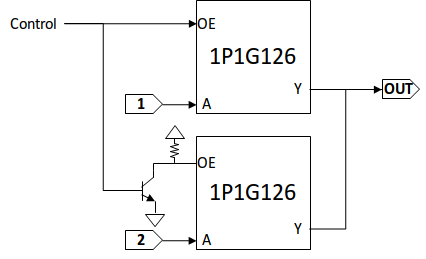Other Parts Discussed in Thread: SN74LVC1G125-Q1, SN74LVC1G3157
Dual SN74LVC1G126-Q1 Usage
Hi,
My customer would use two SN74LVC1G126-Q1 as SPDT switch like drawing below.
In this circuit, one of the points, we need to take care is the output signal conflict due to delay variation.
It means if we have a device with minimum enable delay (ten) and a device with maximum disable delay (or vice versa), the output signal could be conflicted. Do you think this would be the case?
Other than above mentioned, do you have any other points we should take care?
Thanks,
Ken

